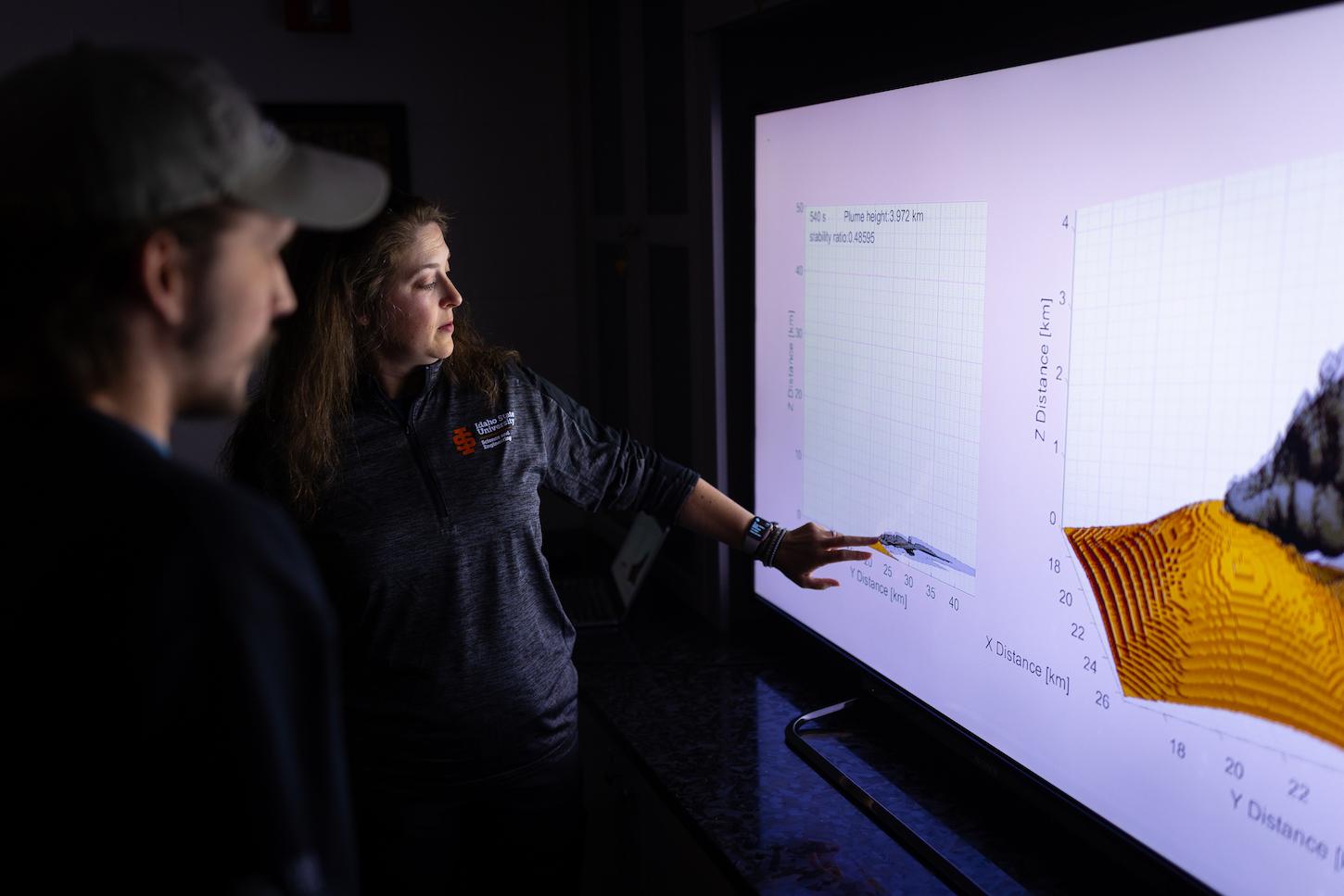Volcano vs. Wind: ISU Geologists Reveal Interaction Between Natural Phenomena
September 26, 2024

Research by geologists at Idaho State University is yielding new insights into the interplay between two of nature’s strongest forces: volcanoes and wind.
Using state-of-the-art computer modeling, the scientists sought to determine how wind affects volcanic plumes–the mix of rock, ash, and gases ejected into the atmosphere–during an eruption.
“We hypothesized that, under the right conditions, the wind could destabilize the plume, sending the plume’s contents to the ground and turning it into a dangerous ground-hugging flow–also called a pyroclastic density current or pyroclastic flow–like the thing that killed everyone in Pompeii,” explained Shannon Kobs Nawotniak, professor and chair of the geosciences department at Idaho State University.
To get their data, the researchers utilized Idaho National Laboratory’s High Performance Computing Center to simulate eruptions at three different locations on the globe: Salem, Oregon; King Salmon, Alaska; and Tres Esquinas, Ecuador. They turned to supercomputers and physics-based models because explosive eruptions like what the team was looking to study are too dangerous and impractical to get real-time data on. For each of the three sites, the research team input different wind speeds and altitudes, volcanic vent sizes, atmospheric conditions, eruption strength, and more into the model. After nearly 1,000 simulated eruptions, the team had their answer.
“We found wind can cause plumes to collapse into a pyroclastic flow, but it needs to be blowing at a very specific height above the top of the volcano,” said Tyler Paladino, a former doctoral student at ISU and current Mendenhall Postdoctoral Fellow at the United States Geological Survey’s Cascades Volcano Observatory.
“We also found the winds will dilute and stabilize the plume if the winds hit it higher in the atmosphere,” said Kobs Nawotniak. “Additionally, we found that very large eruptions are not affected by wind at any altitude.”
“There were also some plume dynamics things that were unexpected,” added Paladino. “In some simulations with moderate wind speeds, the bottom of the plume would generate these small fingers of ash–similar in look to Mammatus clouds–that would extend downward toward the ground while moving with the plume.”
Roughly 800 million people worldwide–about 1 in 10–live under 65 miles from an active volcano. The team's data will help build better computer models for analyzing volcanic eruptions and provide a window into how past eruptions may have unfolded. The results will also help volcanologists make decisions when an eruption is about to begin or is underway.
“Local volcano observatories could use the results of this research to make more conservative evacuation decisions if winds are at the right altitude,” said Paladino. “Additionally, ashfall forecasting offices can more accurately predict how much ash downwind communities can expect during eruptions.”
“Volcanoes will often have a suite of characteristic eruptive behaviors, so the most important thing to do before a volcanic crisis is to have as complete a record as possible of past behaviors from that particular volcano,” explained Kobs Nawotniak. “Our results can be used to update the interpretations for all active volcanoes capable of big explosive eruptions, including Mount Rainier here in the U.S., Eyjafjallajökullin in Iceland, Popocatépetl in Mexico, and many others.”
For more information on ISU’s Department of Geosciences, visit isu.edu/geosciences.
Prospective students can schedule a campus tour at isu.edu/visit.
Categories:
